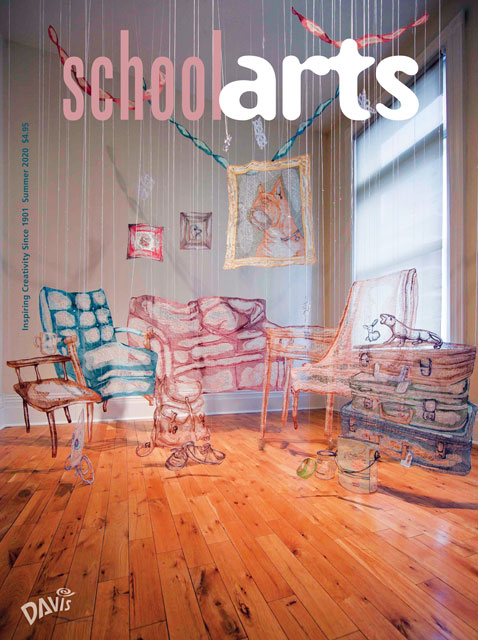.jpg) |
| Nancy with Ian Sands, co-author of The Open Art Room and Making Artists, at the New Mexico Art Education Association conference last fall. |
In 2018, Davis Publications introduced The Open Art Room, a practical guide to implementing an approach to teaching art called choice, influenced by TAB and the Studio Habits of Mind (see below). This book grew from a monthly SchoolArts column of the same name and continues today, written by two veteran high-school art teachers, Melissa Purtee and Ian Sands. Making Artists, the follow-up to The Open Art Room, will be available this year.
The Studio Habits of Mind
Studio Thinking: The Real Benefits of Visual Art Education, by Lois Hetland, Shirley Veenema, and Kimberly Sheridan, is another major influence on choice-based teaching. The Studio Habits of Mind framework was developed through the insightful Harvard Project Zero and includes eight Habits of Mind to be incorporated by the student (see sidebar).
SchoolArts used the Studio Habits of Mind as monthly themes for our 2014–2015 volume year.
Choice Today
In a choice-based art room today, students can learn through whole group instruction, small group meetings, one-on-one student-to-teacher interaction, peer teaching, and personal student research based on their own interests, ideas, and choice of media. A choice-based art room looks and operates in a unique way, incorporating different levels of choice to match the content being taught. The three main levels of student choice are:
- Teacher-directed—The teacher makes the decision or sets specific limitations.
- Modified choice—Students are given a limited range of options from which to choose.
- Full choice—Limitations are minimal. The student is responsible for making all important choices.
Our articles this month address every grade level by predominantly choice-based teachers. So, whatever approach you may want to try in your art room, you’re sure to find something to inspire you. What will you choose?
View this article in the digital edition.


.jpg)
